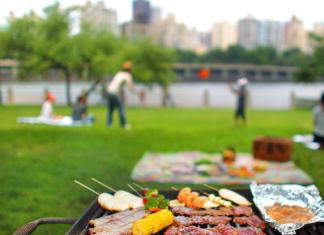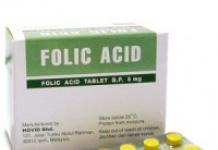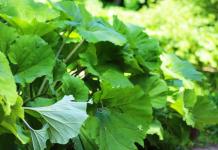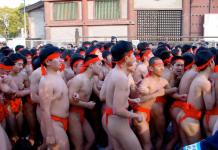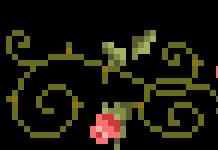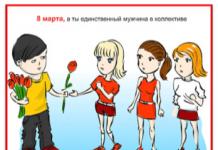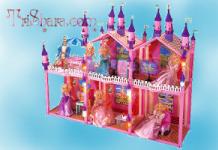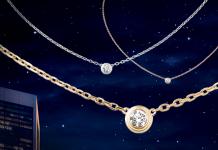Syn .: speckled hemlock, stinking grass, puzzle, poisonous omega, poisonous trunk
Spotted hemlock is a biennial herb with an unpleasant mouse odor.
The plant is poisonous!Ask the experts
Flower formula
Hemlock spotted flower formula: * Ч5Л5Т5П (2).In medicine
Currently, spotted hemlock and the alkaloids contained in it are practically not used by doctors as a medicine in scientific medicine due to cases of poisoning during treatment. Meanwhile, the methods of using hemlock preparations in the treatment of sarcoma and other tumors were patented already in 1990 and 2000.
Hemlock spotted and preparations based on it are used mainly in homeopathy for atherosclerotic phenomena, tumor-like formations, uterine fibroids. Earlier in homeopathy, alcoholic tincture of fresh hemlock was used as one of the best remedies for cancerous tumors, swelling of the lymph glands, scrofula, anemia, headaches, constipation, urinary retention, dry convulsive cough, feelings of fear, delayed menstruation, heartburn, tinnitus ... For example, the leaves have been used for rheumatism and gout. Hemlock spotted is quite effective in breast and prostate cancer as an analgesic, it also stimulates the work of hematopoietic organs, relieves varicose veins.
In some countries, in particular Tajikistan, hemlock fruits were used to treat epilepsy, cardiovascular diseases, skin cancer as an analgesic and hemostatic agent.
Contraindications and side effects
Spotted hemlock is an extremely poisonous plant!
All plant organs contain alkaloids (coniin), so the use of drugs based on hemlock spotted requires very great care.
In case of an overdose, strong arousal is observed, accompanied by convulsions, turning into depression of the central nervous system, and subsequently respiratory arrest.
The main symptoms of hemlock spotted poisoning: nausea, salivation, dizziness, impaired swallowing, speech impairment, pale skin, ascending paralysis (from the lower extremities), accompanied by loss of skin sensitivity, dilated pupils and lack of reaction to light.
In cases of poisoning, you must immediately drink warm water sweetened with honey and induce vomiting, or rinse the stomach with a 0.1% solution of potassium permanganate, followed by the appointment of an aqueous suspension activated carbon.
In other areas
Good insecticide. Although hemlock is a good honey plant, its strong toxicity excludes the possibility of using it as a honey plant.
Classification
Spotted hemlock (Latin Conium maculatum) is a species of the Hemlock genus (Latin Conium) of the Umbrella family (Latin Apiaceae). The hemlock genus includes 4 species, distributed mainly in the temperate regions of Eurasia, North America and Africa. One of the species, in particular, spotted or speckled hemlock is found in Russia.
Botanical description
Biennial herb with a high stem (60-180 cm). A very poisonous plant, it has an unpleasant mouse smell. The root is powerful, fusiform, whitish. The stem is glabrous, branched, thinly furrowed, hollow, with a bluish bloom and reddish-brown spots. Leaves (lower) petiolate wide-triangular, thrice-pinnate, rather large (30-60 cm in length), middle and upper leaves are smaller, with a very short petiole - almost sessile, with narrow sheaths, their terminal lobes are pinnately incised or separate. The flowers are small, almost white, collected in complex umbrellas, forming a corymbose-paniculate inflorescence. The perianth is double, 5-membered. There are also 5 stamens, alternating with petals. Pistil with a lower two-celled ovary. Hemlock flower formula: * H 5 L 5 T 5 P (2). The fruit is a two-seed, which breaks down into two fruitlets (mericarp). Secretory tubules are absent in mature fruits. Blooms in May-June.
Spreading
In Russia, it is found almost throughout the entire European part (except for the Far North), in the Caucasus, in Western Siberia... It grows on forest edges, flood meadows, limestone slopes, as a weed in crops and vegetable gardens, on fallow lands and wastelands, near dwellings, near roads and fences, in landfills, on the slopes of ravines, along railways.
Regions of distribution on the map of Russia.
Procurement of raw materials
For medicinal purposes, the herb (stems, leaves, flowers) of hemlock spotted is usually used. Raw materials are harvested during flowering and the beginning of seed formation (June - July). Leaves and stems are harvested during flowering, unripe seeds are plucked along with umbrellas. The grass is dried in the shade under a canopy or in dryers at temperatures up to 40 ° C. The seeds in the umbrellas are also dried, then the seeds are carefully separated from the umbrellas, they easily spill out when dry. Since all parts of the plant are highly poisonous, safety rules must be strictly observed when collecting. It is strictly forbidden to taste the plant and allow children to collect raw materials. Hemlock is a strong ether-nose, its unpleasant mouse smell causes a severe headache, therefore, when collecting inflorescences, the plant should be approached from the wind. Dried raw materials are stored in bags, separately, in well-ventilated, dry rooms.
Chemical composition
All organs of the spotted hemlock contain poisonous alkaloids, coniine (the most poisonous), methylconiine, conhydrin, pseudoconhydrin, conicein, as well as fatty oil, which contains glycerides of petroselinic and petroselidic acids. In the leaves - up to 0.1% alkaloids (coniine), essential oil (up to 0.08%), caffeic acid; in flowers - up to 0.24% alkaloids, quercitin (included in the vitamin P group), kaempferol; in fruits - up to 2% alkaloids, including coniine (up to 1%), methylconiine, conhydrin; in seeds - up to 2% alkaloids and 0.08% essential oil and caffeic acid.
Pharmacological properties
The pharmacological properties of hemlock are due to its chemical composition, mainly the content of alkaloids (coniin). Preparations (extract and patch) based on hemlock spotted have sedative, analgesic, anticonvulsant, analgesic, anti-inflammatory properties, as well as a diuretic effect (condensed juice).
Application in traditional medicine
In the case of using drugs based on spotted hemlock in the practice of traditional medicine, it is necessary to remember about the strong toxicity of this plant and especially not to recommend it as a remedy. At the same time, the tincture and juice of the herb hemlock spotted is quite widely used as a sedative, anti-inflammatory, anticonvulsant, sedative, anticancer, anti-asthmatic and analgesic agent for painful conditions accompanied by convulsions or spasms of internal organs, gastric and intestinal colic, chorea, epilepsy, pertussis, whooping cough anuria, anemia, dysmenorrhea, emissions, syphilis. Alcohol tincture of hemlock seeds and leaves is used as a pain reliever for various pains (especially cancer) arising from diseases of the digestive system, with urinary retention in the bladder, with anemia, delayed menstruation, nocturnal ejaculation in adolescents, persistent painful cough, cancer of the uterus, stomach , intestines and other diseases. For cancers (uterus, intestines, etc.), infusions are sometimes used. Hemlock shoots (leaf and stem) are used as a very powerful effective agent in the fight against cancerous tumors and cancer pain, as well as in its treatment. In the practice of traditional medicine, there are a number of cases when completely hopelessly sick people were cured of cancer of the breast, esophagus, stomach, liver with the help of a hemlock. Hemlock also stimulates the work of the hematopoietic organs, relieves varicose veins.
In folk medicine, ointment (hemlock powder, dissolved in honey) is used externally to treat inflammation of the lymph nodes. The ointment also works great as a wound healing agent.
Hemlock herb extract is used to flush malignant ulcers. Hemlock preparations are used for prolonged headache, for chronic inflammation of the eyes (in the form of lotions), hearing loss, impotence, and bone diseases.
Historical reference
Spotted hemlock has long been used (especially in Ancient Greece) as an "official" poison, which was used to poison those sentenced to death. It is believed that hemlock poison was poisoned ancient greek philosopher Socrates and the military leader Phocion. Since the time of Hippocrates, hemlock has been considered a medicinal plant.
The botanical name of the plant is "konium" - itself warns of danger, as it comes from the Greek "horse" - killing.
Spotted hemlock is also called spotted hemlock, smelly grass, puzzle, poisonous omega, poisonous trunk.
Literature
1. Atlas of medicinal plants of the USSR / Ch. ed. N.V. Tsitsin. M .: Medgiz, 1962.S. 87-89.
2. Encyclopedic Dictionary of Medicinal, Essential Oil and Poisonous Plants / VN Voroshilov et al. M .: Selkhozgiz, 1951. P. 45.
3. Genus - Omega, Hemlock (Conium L.) // Flora of the USSR. In 30 volumes / Started under the leadership and under the main edition of Acad. V. L. Komarova; Ed. volumes by B.K.Shishkin. M.L .: Publishing house of the Academy of Sciences of the USSR, 1950.Vol. XVI. S. 225-229.
4. Maznev, NI Encyclopedia of medicinal plants. 3rd ed., Rev. and add. M .: Martin, 2004.S. 102-103.
5. Universal encyclopedia of medicinal plants / comp. I. N. Putyrsky, V. N. Prokhorov. M .: Makhaon, 2000.S. 85-86.
6. Gubanov, IA et al. 964. Conium maculatum L. Spotted hemlock // Illustrated guide to plants of Central Russia. In 3 volumes. M .: T-in scientific. ed. KMK, Institute of technologist. issl., 2003. T. 2. Angiosperms (dicotyledonous: dicotyledonous). P. 627.
Hemlock is a biennial poisonous herb that belongs to the Umbrella family.
It can be found in Asia, Europe and Africa. On the territory of Russia, hemlock grows in Western Siberia, in the warm regions of the Caucasus, in the central part of the country.
In the first year, the plant forms a basal rosette with feathery foliage, outwardly it can be confused with parsley. The next year, a tall and spotted stem grows (up to two meters). It ends with an umbrella inflorescence on which seeds are formed.
Useful and medicinal properties of spotted hemlock for men, women and children, methods of using the plant, contraindications to the use of herbs are discussed in detail in this article.
How to choose and prepare yourself

The plant looks like another medicinal herb- angelica. And they can be confused.
But hemlock is characterized by an unpleasant mouse aroma... With prolonged inhalation of this smell, people begin to feel dizzy and have a headache.
For the manufacture of medicines, leaves, flowers and fruits of the plant are used. When collecting, be guided by the following rules:
- cut the grass with rubber gloves to minimize contact with the poisonous plant;
- when collecting, you must wear closed clothing;
- stand on the side of the wind to inhale less poisonous odor;
- collect hemlock during the flowering period - from June to September, depending on the climatic zone;
- dry the grass in a dark, ventilated and non-residential premises, away from children.
Collection and preparation of hemlock, preparation of tincture:
Chemical composition
The main feature of the chemical composition is the toxic component of the product... In ancient times, strong and deadly poisons were prepared from hemlock.
After rash use of the plant, respiratory paralysis occurs, and only three kilograms of fresh grass can kill an adult cow or horse.
The hemlock contains the following components:
- poisonous alkaloids- Coniin is the leader among them, in smaller amounts: methylconiin, conhydrin, conicein, etc. These elements have a nerve-paralytic effect. Poisonous substances are contained in the plant in high concentration before flowering; during flowering, the main part passes into fruits;
- essential oils ;
- flavonoids- quercetin, kaempferol;
- fixed oils;
- organic acids and caffeic acid.
How is the herb useful?
During treatment, patients use alcohol tincture, oil or water infusion... During therapy, the recipe and dosage should be strictly observed.

For the preparation of funds, the leaves and flowers of the plant are used in fresh or dried form.
Hemlock has established itself as one of the main agents in the fight against cancerous tumors... Although traditional medicine does not recognize herbal medicine, there have been a number of cases of patients who have been healed. Phytotherapists advise to drink the plant for any type of tumor.
To prepare alcoholic tincture, take two glasses of freshly chopped plant (it is better to use scissors when cutting).
Add two hundred and fifty milliliters of alcohol. Close the jar with a lid and leave in a cool, dark place for at least three weeks (up to forty days).
Shake the contents every day, the lid must never be opened. After forty days, strain the tincture. Store in a dark glass vial in the refrigerator.
Hemlock helps with hypertension... Take two drops of the tincture a day, four times a day. In winter and autumn, when there is no fresh plant available, you can prepare a tincture from the dry herb.
40 grams of dry raw materials should be poured with 400 grams of vodka. Insist for three weeks - forty days in a dark cool place. Shake it every day. Then strain. You can take. Store the medicine in the refrigerator.
For the treatment of internal tumors, a plant-based oil is used. It helps with goiter, fibrioma, pain caused by rheumatism or.
To prepare butter, take thirty grams of fresh raw materials and pour 300 milliliters. Soak for three weeks, remember to shake it.
Filter before use. Apply oil compresses, keep them for thirty minutes, two to three times a day.

For skin diseases, burns, even hemorrhoids, a plant-based ointment will help... It should be used to lubricate the affected areas of the skin, it should be washed off from the head and neck after two hours, on the rest of the body it is allowed to keep the ointment much longer.
To prepare the product, mix one hundred milliliters of unrefined oil and twenty-five grams of a dry plant. Leave in the refrigerator for two weeks, then strain.
Then take one hundred milliliters of oil again, put on low heat and gradually add a little beeswax. When the mass has cooled, mix the ingredients, stirring well.
Tincture helps to cure chronic constipation... Treatment is carried out for 2-3 weeks. Every morning, on an empty stomach and before bedtime, you should drink ten drops of the tincture diluted in water.
Hemlock helps to cope with urolithiasis, the tincture removes stones from the body. The course of treatment is 2-3 weeks, similar to the treatment of oncological diseases.
There are many ways to treat hemlock cancers. But the most reliable is the Tishchenko method. The method consists in drinking hemlock tincture every day on an empty stomach.
Treatment starts with one drop (diluted in one hundred milliliters of water), one drop is added every day until a dosage of forty drops is reached. After that, the dose should be reduced by one drop every day.
For every ten drops, add 50 milliliters of liquid. As a result, 40 drops are diluted in 300 milliliters of water. At first, you may feel weakness, nausea, heaviness in the head.
To achieve the final result treatment should be carried out for several years, at least 3 courses per year.
What tinctures and oils help from, how to take them

Hemlock tincture and oils used by women for problems with the reproductive system.
The plant helps with benign neoplasms (fibroids, cysts, polyps) and malignant diseases of the uterus. It can be used for endometriosis, mastopathy.
Good results were shown by external application - tampons and douching... But before use, the tincture is diluted with water, and the oil is diluted with vegetable oil.
Hemlock tincture also helps the male half. With involuntary ejaculation it is recommended to use two drops of hemlock tincture, diluted in a tablespoon of water, three times a day. Treatment is carried out for 1-2 months.
Potential Hazards and Precautions
The main danger lies in the high concentration of poisons in the plant. The main contraindications include the following:
- severe pathologies of the kidneys and liver;
- individual intolerance;
- allergic reactions from the body;
- postoperative period or exhaustion;
- during chemotherapy sessions;
- pregnancy, lactation, childhood.
In case of an overdose of hemlock, intoxication appears in a person... The patient's coordination is disturbed, chills and dizziness are felt, nausea, diarrhea, and choking are possible.
At the first symptoms, you should immediately call an ambulance and explain how the victim was poisoned. If you ignore the poisoning, cramps and spasms of the muscles of the respiratory system are possible.
How to apply
Hemlock - poisonous and dangerous plant ... It should be used with extreme caution; at the first sign of poisoning, you should seek help from the hospital.
The medicine is taken 2-4 times a day, depending on the prescription. Maximum possible dose- 90 drops of tincture, over this volume, intoxication of the body begins ..
Tincture and other herbal preparations are used only for medicinal purposes. In ancient times, dangerous poisons were prepared from the plant, causing paralysis.
If the plant gets into food, you should go to the hospital. to cleanse the body.
Cases of hemlock poisoning are known even after long contact with grass or inhalation of its smell.
In folk medicine
Small doses help in the treatment of many diseases. Hemlock has long been used by herbalists and herbalists. Although in a number of countries the plant is officially banned for consumption due to the high concentration of poisons.
For prostate adenoma, you should use the following method: dilute twenty drops of tincture in a glass of warm water. Inject the solution into the anus overnight. The cure occurs on the 10-12th day.
Herbal ointments and oils heal wounds and burns on the skin... These remedies can also be used for skin diseases. But the composition cosmetics Hemlock has never entered or is.
The plant has many poisonous properties ( the grass is even harvested with rubber gloves) and can be used only in exceptional cases and in small doses.
Hemlock is a biennial poisonous plant... But in small concentrations, toxic substances have a therapeutic effect on the human body.
There are frequent cases when herbal treatment helped to heal cancer patients.
Consult your doctor before plant treatment... In case of poisoning, be sure to seek help from the hospital.
In contact with
Hemlock is a very interesting, ubiquitous plant with a controversial reputation. This herb has long been used for medicinal purposes, widely known for its healing properties. However, it's not a secret for anyone that hemlock is poisonous and requires the most accurate dosage. Therefore, you need to use it very carefully. Let's discuss what hemlock looks like, how you can be treated with it. We will separately touch upon contraindications for use. The material is provided with photographs of hemlock leaves and fruits, so that even an inexperienced herbalist cannot be mistaken.
Hemlock is wild herbaceous plant having a two-year life cycle. In the first year, it does not form reproductive organs and does not form a long stem. The aerial part is represented by a lush rosette of basal leaves. Flowering occurs in the second year, usually in mid-July. Many white thyroid inflorescences are formed. Fruits are set not earlier than August. The plant belongs to the umbrella family. Reaches a height of more than 1.5 m, under favorable conditions it can grow taller than human growth.
The leaves of the plant are strongly dissected, openwork, resembling carrots. The lower leaf plates can reach lengths of up to 50 cm. Fruits are typical for umbellate, round or ovoid, slightly compressed from the sides, brown, about 3 mm long. The stem is smooth, hollow. Spotted or speckled hemlock is ubiquitous. It is so called because it has characteristic reddish-brown spots on the stem. Hemlock exudes a peculiar unpleasant odor.
 Hemlock possesses unpleasant odor
Hemlock possesses unpleasant odor The distribution area of this plant is quite wide. It grows along roads, in landfills, along river banks, on forest edges, wastelands, vegetable gardens, etc. In nature, it is found almost throughout Europe, in the Asian region with a temperate climate, in China, almost throughout Russia, incl. in the Caucasus and Western Siberia.
Hemlock is able to grow almost everywhere where winter temperatures do not drop below -30 C ° and there is snow cover for a biennial plant to overwinter successfully. On the plots rich nutrients, for example, near livestock farms, where there is a lot of manure, hemlock grows quite violently. Prefers a moisture-consuming, not waterlogged substrate and well-lit areas.
Important! Hemlock has a number of popular names, these are: puzzle, poisonous umbrella, stinker, omega, tar, clubs, etc.
Hemlock application
Hemlock treatment has a very ancient history. There is evidence that for the first time small doses of drugs based on this plant were proposed by Hippocrates. Interest in hemlock treatment methods waned and then increased again. Now, when phytotherapy is on the rise in our country, this plant has not been forgotten either. The patented medications based on hemlock, although they are most widely used in homeopathy.
The properties of hemlock are most valuable in the treatment of tumors, including cancerous ones. The strong plant alkaloid canin, found in the organs of the plant, acts as an antigen. It triggers immune responses that normally cannot occur in the human body. In the blood, special antibodies of a protein nature are formed, which, decaying, inhibit cancer cells.
 Hemlock is used to treat various diseases
Hemlock is used to treat various diseases Several schemes for taking hemlock are popular, among them the methods developed by the following specialists have found the most widespread use:
- V. V. Tishchenko (royal).
- Danikov N.I.
- Nikoforov Yu.V.
Therapeutic doses of drugs prepared on the basis of the leaves, seeds or stems of hemlock are used to achieve the following medicinal effects:
- pain relief;
- wound healing;
- improving immunity;
- fight against tumors of various etiologies;
- treatment of chronic infectious disorders;
- tranquility;
- disinfection;
- improving the work of the vascular system;
- elimination of failures of hematopoietic activity.
It is recommended to prepare an alcoholic tincture; you can use vodka for these purposes. Since the vegetable alkaloids and fatty oils contained in the hemlock dissolve better in ethyl alcohol. In addition, the aqueous tincture is stored for only a few days. While an alcohol-based drug can be stored in the refrigerator for at least 1 year, and often much longer.
Advice. When treating tumors using a hemlock, you can prepare a tincture on a good homemade moonshine. Since it is believed that microscopic doses of fusel oils help to get rid of malignant neoplasms.
Collecting hemlock raw materials should be taken with care. Since the plant contains a huge amount of essential oils, its buds have a strong odor. When collecting, headaches and ailments may occur. To avoid such troubles, you need to approach the plants from the leeward side.
Contraindications to the use of hemlock
In no case should we forget that hemlock is a neuroparalytic poison. The strongest alkaloids in the composition of the plant, when the dose is exceeded, can cause poisoning.
 Hemlock should not be used to treat children
Hemlock should not be used to treat children The primary signs of an overdose are:
- irritability;
- increased blood pressure and heart rate;
- tremor;
- nausea;
- speech disorder;
- dilated pupils;
- pale skin.
In case of poisoning, an urgent need to go to the hospital. Where, in a hospital, qualified assistance will be provided. Otherwise, paralysis, convulsions, respiratory failure, loss of skin sensitivity are possible.
Important! Even in ancient Greece, hemlock was used as an effective medicine. However, at the same time it was used as a poison for the execution of dangerous criminals.
Often people do not believe in the effectiveness of herbal treatment, refer to such drugs as weak. But in the case of a hemlock, one must not forget that in his chemical composition contains poisonous substances. Contraindications for use:
- Pregnancy and lactation.
- Elderly age.
- Immune system disorders.
- General exhaustion.
- Postoperative period.
- Liver disease.
 Remember that hemlock is poisonous, it should only be taken under the supervision of a doctor.
Remember that hemlock is poisonous, it should only be taken under the supervision of a doctor. Also, most doctors agree that giving hemlock to children is very dangerous. Here one should adhere to the statement “do no harm”. In addition, you need to understand that in the treatment of cancer, it is always necessary to consult a doctor. Since hemlock tincture can cause sometimes unpredictable immune reactions, the specialist should be aware of taking the drug. What's more, hemlock can interfere with the effectiveness of chemical or radiation therapy. It is extremely important to consult with your doctor about all drugs that the patient intends to take.
Hemlock, like many other poisonous plants, is capable of healing the human body. By launching complex processes, accelerating the heart rate, increasing blood pressure, this plant is healing. But it is very important not to forget that this is poison. Collecting, preparing and taking tinctures must be extremely careful, dosed, without deviating from the chosen treatment regimen.
Hemlock speckled: video
The full name of this plant - spotted hemlock - was obtained by him because of the characteristic reddish-brown spots that cover the hollow stem, reaching 1.8 m in height. Hemlock belongs to the umbrella family, it is a two-year-old tall herb with triangular leaves, like parsley, and small white flowers, in place of which tiny, rounded seeds ripen. They spill out from their umbrellas onto the ground, and ensure sustainable reproduction of hemlock throughout the entire range. And this plant is found almost everywhere: from Africa and Asia to Northern Europe, and the southern hemlock varieties contain more biologically active substances than their northern counterparts.
A young hemlock can be mistaken for parsley by negligence and can be severely poisoned. All parts of the plant are poisonous: leaves, roots, flowers and seeds. Hemlock's tall flowering bush outward appearance strongly resembles the forest bush, with which inexperienced herbalists in the European part of Russia confuse it. Kupyr is harmless, but also useless, therefore, before deciding to harvest a hemlock for therapeutic purposes, you need to get to know its photos properly, or enlist the support of an experienced naturopathic pharmacist.
What does hemlock look like?
Attention: the hemlock is poisonous, so wash your hands thoroughly after working with the hemlock. Strictly follow dosages! Keep the hemlock medicine out of the reach of children.
From the history of the use of hemlock
The Latin name of this herb sounds like "Conium maculatum", and in translation the word "conium" means "killing". Indeed, in the days of Ancient Greece, hemlock played the role of the official "executioner". The sap of the plant poisoned people condemned to death. Some historians believe that it was with the help of the hemlock that the famous philosophers of antiquity Socrates and Phocion were killed.
Another ancient sage, Hippocrates, first drew an interested look at hemlock as a medicinal plant. He suggested that in miniscule doses, the juice of this poisonous bush could be of medical benefit. Later, Avicenna and Dioscorides, healers who actively used hemlock in practice, agreed with Hippocrates. Avicenna repeatedly mentions hemlock in all three books of his medical work "The Canon of Medicine".
In Russia, hemlock was well known to folk healers. The book "Izbornik Svyatoslav Yaroslavich", which was published in 1074, describes recipes for the treatment of both malignant and venereal diseases with the help of decoctions and infusions of hemlock.
Modern medicine has not written off hemlock, even on the contrary - now scientific research is underway aimed at the development of anticancer drugs based on the extract of this poisonous plant. At the moment, in six developed European countries (Spain, Portugal, Austria, Germany, Bulgaria and France) and in three Latin American countries (Chile, Mexico and Venezuela) hemlock is included in the official pharmacopoeia.
In Russia, this plant has no state medical status now, but is actively used by homeopathic doctors and traditional healers. And from 1866 to 1902, hemlock was included in the official Russian pharmacopoeia as an anesthetic and antispasmodic.
Since the hemlock contains tannins, it can theoretically be used for leather harvesting, but the plant's toxicity is an obstacle to its widespread use. Hemlock flowers are a good honey plant, but for the same reason, the honey produced by bees as a result of such pollination is unsuitable for food. Hemlock juice can be used as a natural, effective insecticide, but the fruit must be washed very thoroughly after this treatment.
Hemlock chemical composition

The plant contains the following biologically active components:
Alkaloids (coniin, conicein, conhydrin, pseudoconhydrin, methylconiin);
Glycerides of petroselidic and petroselinic acids;
Caffeic acid;
Horsey essential oil;
Kaempferol and quercetin (PP vitamin).
The most poisonous constituent of hemlock is the konyin alkaloid. Most of it is contained in plant seeds (about 2%), less in flowers (0.24%), even less in leaves, stems and roots (0.1%). The toxicity of the leaves is not the same throughout the life of the plant: they have more alkaloids before flowering, and then the poisons partially migrate to the seeds.
Pharmacological action of hemlock
Hemlock removes pain, has anticonvulsant, anti-inflammatory, sedative and antitumor effects. Since ancient times, hemlock has been considered the most valuable medicinal plant in folk medicine.
Hemlock extract has the following effects on the human body:
Antineoplastic;
Wound healing;
Sedative;
Anticonvulsant;
Antispasmodic;
Immunostimulating;
Antiseptic;
Antihypertensive;
Diuretic.
Therefore, hemlock is used to treat a variety of diseases:
Oncological tumors (, duodenum, and, brain);
Benign neoplasms(prostate adenoma, polyps, cystosis and, fibroids and);
Vascular disease ( , );
Chronic infectious diseases ( , );
As a pain reliever and antispasmodic- at, chorea,.
Collection and processing of hemlock

Leaves, flowers and seeds are collected from hemlock spotted. The collection of raw materials falls at the beginning of June and until September; a lot also depends on the region and growing conditions of the plant. If the flowering time has passed, then you can use the seeds and, since the plant is two years old, then in the fall and early spring you can use the root leaves. But the highest quality raw materials are ripe, but not overripe inflorescences: there is almost no essential oil in them.
You can protect your hands with gloves, but just wash them thoroughly after collecting and handling the hemlock.
Do not take your children with you and let them pick the flowers of a poisonous plant. Even if a child just licks fingers soiled with hemlock juice, this can cause mild poisoning.
It is best to chop off the umbrellas right away and add medical alcohol (40-70%) or vodka, because the essential oil of equine is volatile, thus hemlock quickly loses its healing properties in the air. Take with you a glass container already filled with alcohol or vodka so that you can put chopped hemlock there right at the collection point. Cutting the inflorescences is most convenient with clean, sharp tailor's scissors.
What if the hemlock has faded?
The question may arise: what if the hemlock has finished blooming, do you really have to wait for the next season? Of course not, since the hemlock at any time throws out small leaves that are located near the roots. These are good raw materials, and then the seeds will go. The main rule is to take only green, fresh and fleshy parts of the plant, which contain juice, since withered and dried leaves contain almost no valuable alkaloids.
Hemlock tincture recipe
There are several recipes for creating a cancer remedy with a hemlock. The easiest, safest and at the same time the most effective technique will be described here.
To make the tincture correct, you need to adhere to the proportions:
Two parts of inflorescences and hemlock seeds;
One part rubbing alcohol or vodka.
Therefore, when going to the place of collection of the plant, take with you liter jar with a tightly screwed metal lid, and pre-pour one glass (250 ml) of vodka or alcohol there. This is necessary so that the hemlock does not lose its medicinal properties after cutting, since after grinding the collected hemlock begins to warm up strongly and loses its properties. You just have to collect 2 glasses of raw materials (not tamped), cut it with scissors, put the hemlock in this jar, close the lid and shake well.
You can not grind raw materials with a meat grinder, since very much is released a large number of chlorophyll, which changes the quality of raw materials not in better side... We need to get a pure semi-alcoholic extract, which is achieved by the above method.
Some sources suggest taking 1 glass, 100 g and even 50 g of grass per 0.5 liters of vodka, but this is wrong - the concentration of such a tincture will be weak.
When you come home, hide the jar out of the reach of children, in a dark and cool place. Insist on the medicine for at least three weeks (21 days), but it is better to wait 40 days. In case of emergency, you can start taking it on the third day. The jar needs to be shaken daily, it is better to do this 2-3 times a day. Do not open the lid under any circumstances, since medicinal alkaloids are volatile. Long-term experience of healers shows that hemlock tincture is best prepared in a cool place - at a temperature of 15-20 ° C Celsius, alkaloids most effectively pass into an alcoholic environment.
The finished tincture must be carefully filtered through several layers of sterile gauze, again poured into a clean glass jar with a tightly screwed lid and put into the refrigerator. Make a warning sticker to prevent your family members (especially children) from inadvertently drinking from this jar!
How to determine a quality tincture?
Hemlock tincture is a popular pharmacological agent that is sold ready-made. There are small companies and private herbalists involved in the production and sale of tinctures, so the question arises: can you trust them? Is it worth saving your time and refusing to make your own medicine, and will such savings turn into a purchase of a fake?
The manufacture of counterfeit tincture does not make much economic sense, since hemlock is found everywhere, and the procurement of raw materials does not cause any difficulties. However, the quality and concentration of the tincture can be questionable. A good product will have a rich blue-violet color and a characteristic "mouse" smell - this is how essential horse oil, the main medicinal component of the tincture, smells like that.
How to take hemlock tincture? "Tsarist scheme"

There are several methods of treatment with hemlock tincture, but in practice, the so-called "royal" technique has proven itself best. It is used for any tumors, both malignant and benign, as well as for protracted chronic diseases: tuberculosis, atherosclerosis, thrombophlebitis, lupus erythematosus and many others.
Reception scheme: in the morning before meals, drink one drop of the infusion, diluting it in a glass of water. On the second day, you already drink 2 drops. On the third - 3 drops, and so, gradually increasing the dose, it is necessary to reach 40 drops (if the body is already strongly weakened, then use a lower dose, which will act softer).
Then you should go in the opposite direction, reducing the daily dose by one drop, and reach one drop, this is one circle. In a year, the patient can go through three full courses, and usually this is enough to heal even the most serious illness. There have been registered cases of victory over cancer with the help of hemlock tincture, however, we will not argue that successful treatment consisted only in taking the tincture.
Note that in 30% of cases, hemlock tincture does not affect the body. In this case, phytotherapists usually change the hemlock for some other plant, for example, for.
The subtleties of treatment with hemlock tincture
It is best to take this medicine in the morning, on an empty stomach, 20-30 minutes before breakfast, dissolving the tincture in a small amount pure water- a quarter of a glass is enough. After taking some medicine, first rinse your mouth and hold the liquid for a little, and only then swallow, since the sublingual method of taking hemlock tincture is more effective than oral.
Weakened and elderly patients are recommended to start treatment with hemlock with a shortened course - 20 days, so that the body gradually gets used to poisonous alkaloids. However, even young patients may experience side effects - nausea, bitterness in the mouth, indigestion, skin rash. If this happens, you need to start a reverse dose reduction, it does not matter at what stage of treatment the patient is.
How does hemlock tincture work?
Why do poisonous plants help a person to cope with diseases, although, logically, they should only do harm? The principle of homeopathy is at work here: like cures like. Our body perceives konyin and other poisonous alkaloids as foreign substances, similar to pathogens and tumor cells. Trying to get rid of the poison, human immunity simultaneously gets rid of the disease.
We are quite able to adapt to a small dose of toxic substances over time, but our disease is not, since it is not a human being, and has no immunity. Those antibodies that fill a person's blood in response to the presence of poison successfully cope with an external threat - an infection, a tumor, or even with their own immune cells behaving inadequately, as is the case with autoimmune diseases.
Alternative dosage forms
For skin problems (ulcers, growths, erysipelas,), as well as for pain in the joints and tumors of external localization, it is recommended to combine the intake of alcoholic tincture of hemlock inside with the use of medicinal oil.
Hemlock Oil Recipe:
Olive or sunflower oil- 500 ml;
Crushed inflorescences and hemlock seeds - 2 cups.
You need to cook the oil in a glass jar with a tightly screwed lid, and keep in a dark, cool place for 21 days, just like the tincture. Then strain and store in the refrigerator or somewhere on a high shelf, out of the reach of children, since hemlock oil does not deteriorate at room temperature.
It is recommended to lubricate the affected skin with oil twice a day, and if the joint hurts, then a sterile bandage soaked in oil is applied, covered with cellophane on top and wrapped in a warm scarf. So you can significantly improve the well-being of a patient with radiculitis, osteochondrosis or gout, but remember that warming compresses are contraindicated in inflammatory processes in the joints!
Lotions with hemlock oil are applied for 2-3 hours on ulcers and poorly healing wounds. Such oil also helps with varicose veins - sore areas need to be lubricated daily at night. With hemorrhoids, sterile tampons soaked in hemorrhoid oil can be inserted into the anus before bedtime - this relieves pain well, reduces inflammation and bleeding.
Contraindications to hemlock treatment

Individual intolerance to hemlock and allergic reactions to it are extremely rare. However, in some cases, it is better to refuse treatment with hemlock, so that harm from poisonous alkaloids does not aggravate the situation. In general, you need to take such medications only when the risk is justified, and there is simply no other, safer way to cure.
Hemlock tincture should not be taken:
Very old, weak, emaciated patients;
Small children and expectant mothers;
Patients who have just undergone surgery;
People with congenital dysfunction or severe liver disease.
It is necessary to say separately about the liver - it is this organ that is responsible for cleansing the blood of poisons, therefore, and the chronic one deprives a person of the chance for treatment with hemlock. As for cancer patients who have had the tumor removed, then 2 months after the operation, provided they feel normal, they even need to start taking hemlock tincture in order to prevent the occurrence of relapses and new ones.
It is known that hemlock does not have a pronounced therapeutic effect on some people (there are only about 30% of them). It's just that for some reason, alkaloids do not stimulate the production of life-giving antibodies. Such patients can be recommended other tinctures on poisonous plants - celandine, aconite. Perhaps some other alkaloid will trigger the desired reaction.
What to do in case of hemlock poisoning?
In order for the poisoning to occur, it is enough for a person to inadvertently eat a small bunch of grass, for example, confusing the hemlock grown in the garden with. Animals require large doses - for example, a horse or cow grazing in a meadow will be poisoned by a hemlock only if they eat 2 or more kilograms of grass.
Signs of hemlock poisoning
In severe hemlock poisoning, signs of ascending paralysis appear. The limbs become heavy, coldness is felt all over the body, goosebumps appear, the face is pale, it is difficult to swallow, there is dizziness, dilated pupils, hesitation and vagueness of objects in front of the eyes. There is a burning sensation in the throat, nausea is felt,. Respiratory paralysis is possible.
In addition, a person who has poisoned with a hemlock has the following primary symptoms:
-
Dilated pupils;
Pallor and cyanosis of the skin and lips;
Copious secretion of saliva;
Hand tremor;
Swallowing and speech disorders.
Nervous excitement;
The alkaloid konyin acts on the body like acetylcholine, nicotine and curare poison. First, there is an activation, and then a sharp depression of the central nervous system. If the dose of hemlock was large (20 g or more), the person's condition will begin to deteriorate very quickly.
Hemlock is most often poisoned due to the fact that it is very similar to other plants. In the first year of life, hemlock is difficult to distinguish from parsley. The root of the plant is in the form of a carrot. In the second year of life, it looks like dill, carrots.
At the final stage of severe hemlock poisoning, the following signs are observed:
Loss of skin sensitivity;
Choking and respiratory arrest.
Emergency poisoning
The remedy for hemlock poisoning has been known for a long time, it is also the most effective antidote.
To prepare it, take warm water and add a significant amount of wood oil (this is the lowest grade of olive oil). If not, add linseed or hemp oil. The poisoned person is given a funnel to the throat and this mixture is poured directly into the stomach until he vomits. And so it is necessary to repeat until he regains consciousness. Then you should give him a drink of warm water mixed with honey, after which relief will come.
Give artificial respiration if necessary. Inside, you can also take 30 tablets of activated carbon. Fresh air recommended.
Failure to provide medical assistance to the victim in time may result in death. In case of poisoning with a small amount of hemlock, it is enough to let the person drink half a liter of warm milk with the addition of potassium permanganate (color the milk to a pale pink color), ensure rest and bed rest. And if the dose of a poisonous plant was dangerous, immediate hospitalization and gastric lavage are required.
The effectiveness of hemlock cancer treatment

Hemlock is of greatest interest to cancer patients, since in the treatment of such serious diseases it is advisable to consider all possible means, including homeopathic, folk and alternative ones. I would like to warn everyone who hopes to save themselves from cancer or to cure their loved ones with the help of hemlock tincture: this is not a magic potion, and not a panacea for all ills.
The effectiveness of hemlock tincture and other similar drugs is based on the body's natural defenses. In other words, as far as a person is able to cure himself, the hemlock tincture will help him. If it does not give an adequate, pronounced response to the attack with poisonous alkaloids, then it will not help to get rid of the tumor.
Hemlock cancer treatment effective enough ... but not a panacea! Hemlock is a powerful pain reliever. Despite the fact that hemlock is poisonous, in moderate doses it is easily tolerated by any organism. He does not touch living cells, the adaptation passes quickly. But it has a very detrimental effect on diseased cancer cells. For this reason, he gained great fame.
The second point to remember is that in order to succeed in the fight against cancer, you need to approach treatment in a comprehensive manner. This means that you cannot just give up on the recommendations of an oncologist and hit traditional medicine... One does not exclude the other, and in war all means are good, so take the doctor's prescriptions and the advice of a phytotherapist equally seriously and responsibly.
There are many other medicinal plants, not only poisonous, the use of which in combination helps to cope with. Taking only one hemlock tincture will likely not make you successful. But if, in between courses, you switch to other drugs of this series, for example, tincture of aconite Dzungarian or celandine, the likelihood of a successful outcome will be higher.
Regarding the very idea of treatment with poisonous herbs, many cancer patients are perplexed by such a prospect. They ask, why poison the body with poison when it is already weakened by a tumor? Let me ask you a counter question: is the chemotherapy prescribed for you by the official treating oncologist, isn't it, in fact, poisoning? In this case, with the help of poisons, doctors try to destroy the malignant cells, but at the same time they poison the patient himself. And homeopathy acts much more humanely - it simply triggers a natural defense reaction, introducing a scanty amount of poison into the body.
Since ancient times, the miraculous herb of Hemlock has been used to treat many diseases. It is also called grass with kind eyes.
Hemlock - grass
Many people know this herb as poisonous. But, along with this, it has medicinal properties. They are used only by professionals who know how to correctly calculate the dose for treatment. In no case should you drink Hemlock's decoction in glasses and self-medicate.
Spotted hemlock grows in Russia, mainly in the middle lane, in the Crimea, in Central Asia and in the Caucasus. The medicinal plant itself can grow up to three meters. Small plantations can also be found in Siberia.
Note! For therapeutic effect Hemlock spotted should be grown in a warm and sunny location. So he is gaining useful material, which are then used for healing effects. During the flowering period, Hemlock has the most useful and healing properties.
Hemlock contains poisonous alkaloids. As well as useful essential oils, tannins, retinol and ascorbic acid.
All of these substances are used as a pain reliever for colds, as well as for seizures. The herb has a positive effect on numerous processes within a person and accelerates recovery, tones the body, and helps to strengthen the immune system.
The properties of a medicinal plant will be useful in cases:
- Migraines and head diseases;
- With various neoplasms, tumors. Such as fibroids, endometriosis, cysts in the ovaries;
- Improvement of vision and restoration of hearing.
Hemlock is also useful:
- For the treatment of syphilis and tuberculosis;
- For the normalization of female cycles;
- To lower the pressure.
Hemlock belongs to the Umbrella family. In appearance, it is vaguely similar to garden parsley, the stems have red spots. The plant has a not very pleasant aroma, causing irritation and headache in large quantities, hence the name.
Another feature is that the plant has no taste. But if you confuse it with regular parsley, you run the risk of serious poisoning. Therefore, you need to carefully consider the collection of Hemlock.
Where and when is the best place to collect Hemlock
Hemlock must be collected with protected hands, wearing rubber gloves. It is usually customary to take it during flowering - this is June-July. Or during ripening in July and August. 
You need to know how to assemble it correctly. Usually, when collecting a Hemlock, you need to approach it from the windy side. This is important because the Hemlock scent is bad for humans. When the plant is dried, the unpleasant odor is further enhanced. Do not forget to ventilate the premises so as not to harm yourself.
Important! After assembling the plant, wash your face and hands well. And keep the plant itself isolated from other drying herbs!
Hemlock leaves and flowers are harvested when the plant begins to bloom. It is customary to dry in the sun, preferably outdoors, or in a ventilated area. The seeds, along with the umbrellas, are collected and dried in the same way. When the plant is completely dry, seeds will begin to pour from the umbrellas.
After the plant has dried completely, the herb is collected and stored in glass vessels, which are carefully closed. Keep away from other herbs. The shelf life of dried Hemlock is 2 years.
Hemlock, medicinal recipes
Some countries do not recognize Hemlock treatment. At the same time, the plant is a part of many preparations; injections can also be carried out. different types, which include Hemlock. But in Russia, the official treatment with hemlock herb is strictly prohibited.
For the treatment of cancerous tumors, a tincture is often used, which is prepared from freshly squeezed juice. It is important to remember that dosage is important and to be adhered to. In case of an overdose, immediate inflammatory processes are activated. If there is a deterioration in the condition, you must refrain from taking medication.
It's important to know! When treating with a plant, you must refrain from eating dairy products. Also, you do not need to use fatty oil and canned food.
It is required to reduce the salt and sugar content of food. And also do not drink alcoholic beverages!
In traditional medicine, various methods of treatment with Hemlock are known. Most of them are considered by the healer V. Tishchenko.
How to make a tincture
 Dried Hemlock Herb
Dried Hemlock Herb Grind the entire collection and add to the alcohol. The proportions are as follows: one third is crushed Hemlock, and the rest is vodka. It is necessary to take this tincture with an aqueous solution or with a decoction of oregano prepared in water. It should be borne in mind that a greater consumption of water contributes to the rapid removal of the plant's poison from the body.
For recovery, it is necessary to undergo 2 courses of treatment with tincture, gradually increasing its amount.
It is worth starting with 13 drops per 100 ml of water, gradually increasing the dose to 30 drops. If you feel good at the same time, then the tincture works, and the body is on the mend.
But if worsening is felt, immediately reduce the amount to 1 drop. These proportions are designed for an adult and it is not recommended to change the dosage yourself.
Hemlock making oil hoods
 For the improvement of internal organs, or rather, the prevention and removal of tumors, it is required to prepare oil.
For the improvement of internal organs, or rather, the prevention and removal of tumors, it is required to prepare oil.
You will need to grind fresh seeds and some leaves, weighing about 30 g... Pour 300 ml of the mixture with olive oil. Keep this infusion for 21 days.
Stir regularly. After passing through cheesecloth, strain thoroughly. This application of the herb can be used for compresses. To do this, soak the fabric with oil and apply to the place where it hurts the most.
Keep on the problem area for half an hour. Such procedures are required to be carried out daily, 3 times a day.
How to make an infusion on water
For a tincture from a plant on water, you will need one spoonful of chopped hemlock, mainly foliage. Next, you need boiled water, about half a liter. The whole composition is mixed and poured into a thermos.
 Hemlock decoction
Hemlock decoction The tincture should stand overnight in a warm place. In the morning, everything is filtered and poured into a glass container. Wait another 5 days until fully cooked.
Hemlock where to buy. Drug price
A medicinal plant can be bought at a pharmacy or online stores. The approximate price for hemlock tincture is from 300 rubles per 50 ml.
The larger the bottle of tincture, the more profitable it is to buy. For example, for 750 rubles, you can purchase a 500 ml bottle.
The price of dried grass starts from 250 rubles for 50 g. Usually in Altai online stores Hemlock is sold of very good quality.
The use of Hemlock. Application recipes
Hemlock treatment can be effective if taken correctly and in a proportional recipe. Tinctures are prepared from the plant in water and vodka, oil is made from hemlock leaves. Each option medicinal plant useful if applied correctly.
For skin diseases
If there are skin problems, the following recipe is popular. For 24 g of chopped Hemlock, you will need about 100 ml of oil. You need to take vegetable oil, not refined.
All this is mixed and sent to infuse for 2 weeks. Next, you need to take 100 ml of oil and heat over low heat. Gradually add wax in small portions, stir constantly. After the mass becomes light, it is required to remove from heat and cool.
This ointment is applied to the problem area. The ointment can be kept all day long. Exception - if the ointment is applied to the neck and face area, it is not recommended to keep it for more than 2 hours.
With infectious diseases
According to the Tishchenko method, it is possible to treat diseases associated with weak immunity and other infectious diseases that have become chronic. To do this, you need to take an infusion of Hemlock according to a certain scheme.
Start of treatment: on an empty stomach, the patient drinks one drop of Hemlock in a glass of water, on the second day the dose of Hemlock is increased by one drop. This should be continued for up to 40 days of use.
When the course of treatment reaches the 40th day, the number of drops must be reduced by one drop daily. Thus, one course of treatment takes place. This type of treatment has been tried by many and confirm a gradual recovery.
 With hemorrhoids
With hemorrhoids
To treat hemorrhoids, you need to take pharmacy cotton wool. 3-4 drops of Hemlock tincture are dripped on it. Cotton wool is applied to the problem area. Very often, one treatment is enough exclusively in this way.
If one procedure is not enough, cotton swabs are introduced at night, which are soaked with Hemlock. To apply Hemlock with a cotton swab, an aqueous infusion of Hemlock or oil from a plant can be used. Repeat reception three nights in a row. No more!
Hemlock for constipation
For irregular bowel movements, you can use Hemlock. This requires 10 drops per glass of water. Take 2 times a day, every morning and at night. This use promotes regular bowel movements.
The healing effect becomes noticeable within 2 weeks. After 2 weeks, it is recommended to apply 10 drops only in the morning on an empty stomach.
Hemlock tincture for pain
The well-known properties of Hemlock's analgesic action are familiar to many. If you take Hemlock, then very often the spasms stop, which leads to the rejection of antibiotics and pain medications.
Many cancer patients resort to Hemlock treatment. Of course, they are not healed by this herb, but the pain relieving effect of the herb reduces cramps and soreness.
 If the patient also uses other herbal infusions, then Hemlock should be consumed in the form of a tincture prepared with alcohol. For one tablespoon of water, there are two or three drops of Hemlock.
If the patient also uses other herbal infusions, then Hemlock should be consumed in the form of a tincture prepared with alcohol. For one tablespoon of water, there are two or three drops of Hemlock.
This treatment is effective if taken up to five times a day. It is advisable to take the medicine on an empty stomach.
If the attacks are especially painful, it is worth increasing the number of drops to 10. This amount of Hemlock is also taken for female pain (during menstruation), for kidney disease, stomach and intestinal problems.
In case of cycle violations
Women also use the healing infusion of Hemlock. If the menstrual cycle is irregular, it is worth starting with a course consisting of small doses.
Proportions: for every 2 drops of tincture - a spoonful of table water. Take three times a day. The course lasts 30 days. On the days of menstruation, it is recommended to increase the number of drops to 6.
Hemlock, its medicinal properties in oncology
According to Tishchenko's method, which is called the royal method of treatment with Hemlock, Hemlock is also effective for cancer diseases. But folk medicine will work if you correctly calculate all the proportions and take the infusion on time.
This course of treatment takes place within a month. To start it, you need to prepare the body by cleansing.
Reception and treatment begins with a small dose - from 4 drops. And when the number of drops is reached 40, the dose is gradually reduced.
At the same time, every day the number of drops for taking is increased by one. To obtain the desired result, it is necessary to undergo two courses of such treatment.
Hemlock, contraindications for use
The main contraindications for the treatment of Hemlock:
- Pregnancy and lactation;
- Liver disease;
- Allergy to the drug and its components;
- Severe exhaustion of the body;
- Treatment of children and the elderly is contraindicated.
Signs of drug poisoning:
- Increased blood pressure
- Excitation,
- Pupil enlargement
- Tachycardia,
- Nausea and constipation.
With signs of poisoning, you need to drink about two glasses of warm milk, to which potassium permanganate is added. If the symptoms continue to disturb, then the patient must be hospitalized.
Hemlock: benefit or harm
The Hemlock plant is perceived by healers in two ways. On the one hand, it is poisonous and many are wary of it. But on the other hand, each poison in the correct dosage can be beneficial, and even treat diseases.
The advantage of this plant is that it can be used in different types: from tincture to herbal ointment. Also, a wide range of diseases can be treated with this particular plant.
Hemlock treatment will be effective if you follow the dosage and properly prepare the tincture. These simple rules help get rid of the disease.
Be healthy!
Video about Hemlock and its medicinal properties











